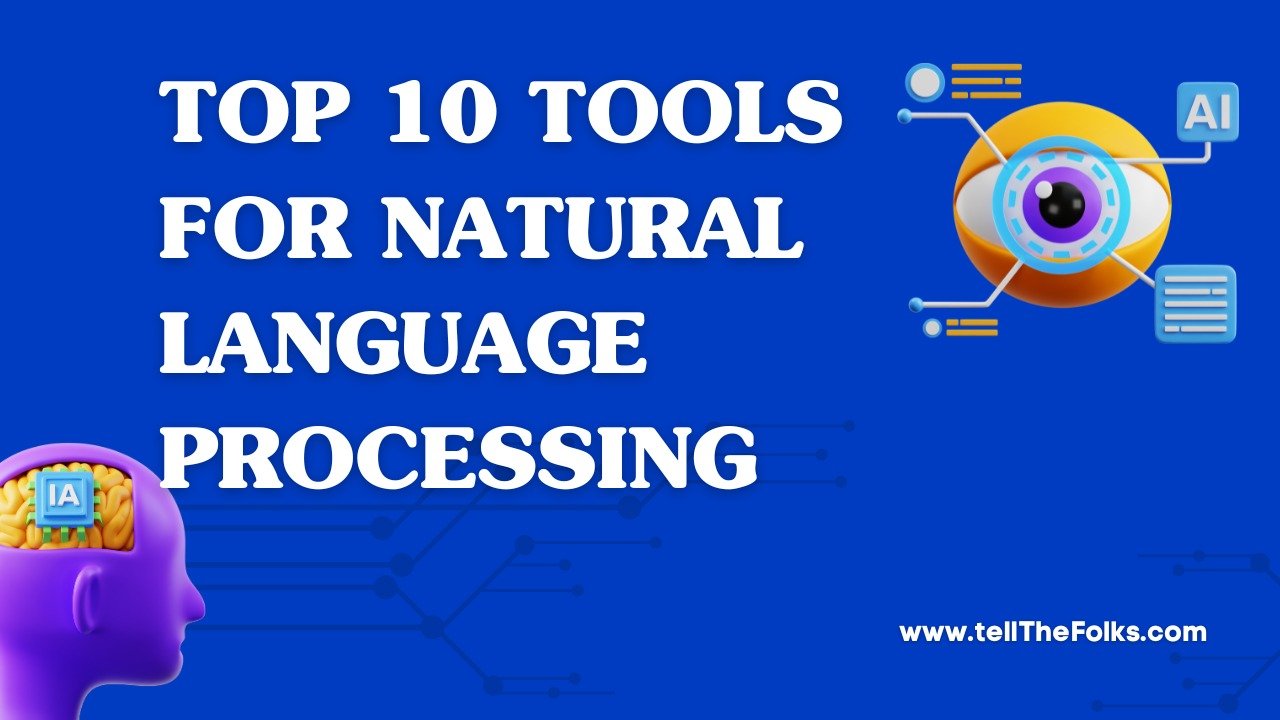
Natural Language Processing (NLP) has transformed into a groundwork of current innovation, empowering machines to grasp and translate human language. From chatbots and remote helpers to feeling examination and language interpretation, NLP tools play a crucial part in transforming unstructured text information into significant experiences. We should investigate the Top 10 Tools for Natural Language Processing that are molding the fate of language understanding.
Top 10 Tools for Natural Language Processing
1. NLTK (Natural Language Toolkit):
NLTK is a main platform for building Python projects to work with human language information. It gives simple to-involve points of interaction and libraries for errands like tokenization, stemming, grammatical feature labeling, and parsing. With its broad assortment of corpora and lexical assets, NLTK is generally utilized for educating and researching NLP. Whether it’s examining text information or creating custom NLP applications, NLTK offers a hearty system for language processing tasks.
2. spaCy:
spaCy is a quick and proficient NLP library intended for creation use. It offers pre-prepared models for undertakings, for example, named element acknowledgment, grammatical feature labeling, and reliance parsing, making it reasonable for an extensive variety of Natural Language Processing applications. With its smoothed-out Programming interface and backing for different languages, spaCy is generally utilized in businesses like medical care, money, and virtual entertainment for undertakings like information extraction, text arrangement, and element connecting.
3. Gensim:
Gensim is a Python library for topic displaying and report likeness examination. It gives calculations and tools to undertakings, for example, inert semantic examination, word implanting, and archive grouping. With its instinctive point of interaction and adaptability, Gensim is broadly utilized for undertakings like archive rundown, semantic pursuit, and proposal frameworks. Whether it’s dissecting huge text corpora or building customized content proposals, Gensim offers a flexible tool compartment for NLP errands.
4. Stanford NLP:
Stanford NLP is a set-up of NLP tools created by the Stanford NLP Gathering. It gives hearty executions of calculations to undertakings like named element acknowledgment, feeling investigation, and coreference goal. With its superior performance models and backing for numerous languages, Stanford NLP is broadly utilized in the scholarly community and industry for undertakings like information extraction, opinion examination, and machine interpretation.
5. OpenNLP:
OpenNLP is a Java library for NLP undertakings, for example, tokenization, sentence division, grammatical feature labeling, and named element acknowledgment. It gives pre-prepared models and tools for preparing custom models on area explicit information. With its lightweight and versatile design, OpenNLP is generally utilized for errands like text order, element extraction, and language age in Java-based applications.
6. FastText:
FastText is a library for effective message grouping and word portrayal learning created by Facebook’s man-made intelligence Exploration. It gives pre-prepared models for errands like text grouping, language ID, and word implanting. With its quick preparation and derivation speed, FastText is broadly utilized under conditions for undertakings like spam recognition, opinion investigation, and language location.
Also Read Top 10 Deep Learning Applications
7. AllenNLP:
AllenNLP is a profound learning library for Natural Language Processing errands created by the Allen Establishment for computer-based intelligence. It gives pre-prepared models and tools for undertakings, for example, named substance acknowledgment, semantic job marking, and coreference goals. With its secluded and extensible design, AllenNLP is broadly utilized for innovative work in regions, for example, question responding to, text age, and exchange frameworks.
8. BERT (Bidirectional Encoder Representations from Transformers):
BERT is a cutting-edge profound learning model for natural language understanding created by Google. It gives pre-prepared models to undertakings like text characterization, named substance acknowledgment, and question addressing. With its bidirectional transformer engineering, BERT accomplishes cutting-edge performance on a large number of Natural Language Processing benchmarks and undertakings. It is broadly utilized in industry and the scholarly world for errands like opinion examination, text outline, and language interpretation.
9. Transformers:
Transformer is a library for natural language processing errands created by Hugging Face. It gives pre-trained models and tools for undertakings, for example, text characterization, language modeling, and text age. With its enormous assortment of pre-trained models and simple-to-utilize APIs, Transformers is broadly utilized for undertakings like opinion examination, report grouping, and machine interpretation underway conditions.
10. Word2Vec:
Word2Vec is a method for learning word embeddings created by Google. It gives proficient calculations to learning disseminated representations of words from enormous message corpora. With its straightforward and versatile design, Word2Vec is generally utilized for errands, for example, word closeness, record clustering, and information recovery. Whether it’s analyzing text information or building proposal frameworks, Word2Vec offers an incredible asset for NLP undertakings.
Conclusion
In conclusion, the field of natural language processing is thriving with a different scope of tools and libraries that engage engineers and scientists to open the force of language understanding. Whether it’s analyzing text information, building chatbots, or developing machine interpretation frameworks, these top 10 Natural Language Processing tools offer strong answers for an extensive variety of Natural Language Processing undertakings and applications. With continuous innovation and headways in profound learning and simulated intelligence, the eventual fate of Natural Language Processing holds a huge commitment to transforming how we interact with and figure out human language.
